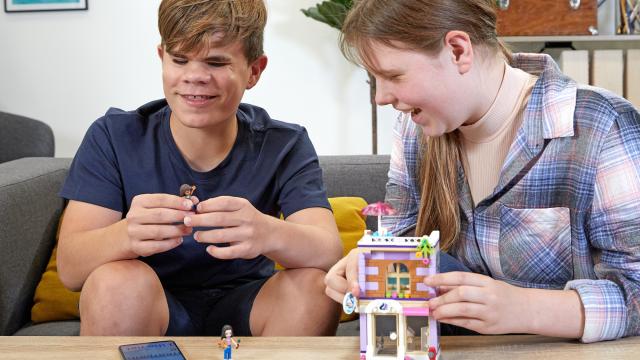Lego remains one of the most popular and valuable toy lines but the company’s sets are also some of the least accessible to those dealing with visual impairments. To remedy this, the Danish toymaker has announced a pilot program to update its building instructions with verbal descriptions so each step is compatible with Braille and screen readers — and its using AI to automate the time-consuming process.
Earlier this year Lego leveraged the popularity and iconic design of its stud-topped building pieces to help teach kids Braille, but this new initiative has nothing to do with learning. Lego isn’t completely inaccessible to the visually impaired, they can still stack blocks and build whatever they can imagine.
But the popularity of the building toy, at least in the past few decades, has been as a result of the company’s licensed sets — everything from Harry Potter to Marvel to Star Wars — and it’s those sets that have been inaccessible to children and even adult collectors unless they have someone else diligently describing and guiding them through each step of the highly visual build instructions.
A few years ago a story about Matthew Shifrin, a blind Lego enthusiast, made the rounds on the internet. On his thirteen birthday a friend, Lilya Finkel, gifted him not only a massive 841-piece Lego set, but an equally giant binder, stuffed with hundreds of pages that translated the set’s building instructions into a special notation she had developed that verbally described how all the pieces assembled, without the use of any images.
Shifrin shared these with the world, and Finkel eventually created blind-accessible instructions for over 20 Lego sets, but it was an extremely time-consuming process, and unfortunately, when she passed away in 2017 she had barely scratched the surface of Lego’s massive collection of sets.
Through a friend at MIT, Shifrin eventually made contact with the Lego Group who not only found an innovative way to continue Finkel’s translation work but to almost completely automate it. Working with the Austrian Research Institute for Artificial Intelligence, a new AI was developed that could translate the 3D models and instructions for assembling a Lego model (known as LXFML or LEGO Exchange Format Mel Script) into step by step text-based descriptions that can be displayed on a Braille reader or read aloud by a screen reader as voice instructions.
The AI is still being perfected but Lego hopes that it will eventually not only be able to convert the instructions from the company’s vast past library of sets, but also for every new set as soon as it’s released, in any language required, with minimal additional effort or human input.
For now, on a new accessible website — www.legoaudioinstructions.com — Lego has released inclusive instruction manuals (in English) for four sets that include Lego Classic Bricks and Ideas, Lego Friends Emma’s Art Shop, Lego City Sky Police Drone Chase, and The Lego Movie 2 Emmet and Benny’s ‘Build and Fix’ Workshop.
It’s a solid first step, and based on feedback on these first four, the company intends to launch more of them in early 2020, and it will hopefully also consider updating the packaging it uses. In addition to the special instructions she had devised, Finkel also sorted and re-bagged the pieces in the set she gifted Shifrin many years ago so that it was easier to find them as he worked through each step.
The initiative isn’t just about Lego expanding its market and being able to sell sets to even more kids, or even a chance for the company to generate some positive PR. Lego sets can also be an excellent learning tool for the blind and visually impaired. The models can serve as accessible miniature substitutes for real-world things like famous buildings and landmarks or vehicles.
Exploring and understanding the design of something as unique as the Sydney Opera House for someone who’s visually impaired can only be done through a replica or model. And the flexibility of Lego means that one week they can study the opera house’s architecture, and the next week it can be rebuilt into the London Tower Bridge.
